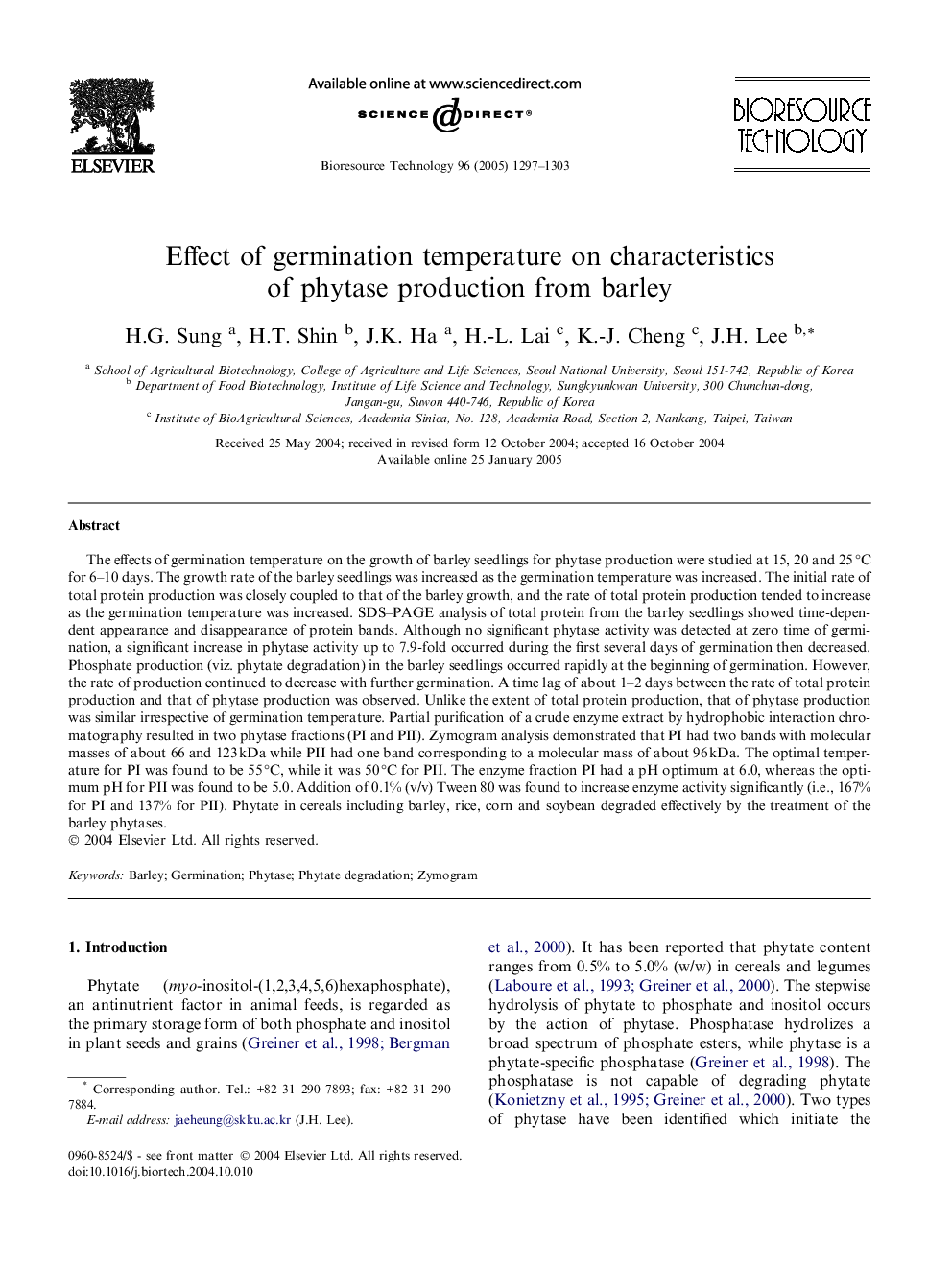| Article ID | Journal | Published Year | Pages | File Type |
|---|---|---|---|---|
| 10396530 | Bioresource Technology | 2005 | 7 Pages |
Abstract
The effects of germination temperature on the growth of barley seedlings for phytase production were studied at 15, 20 and 25 °C for 6-10 days. The growth rate of the barley seedlings was increased as the germination temperature was increased. The initial rate of total protein production was closely coupled to that of the barley growth, and the rate of total protein production tended to increase as the germination temperature was increased. SDS-PAGE analysis of total protein from the barley seedlings showed time-dependent appearance and disappearance of protein bands. Although no significant phytase activity was detected at zero time of germination, a significant increase in phytase activity up to 7.9-fold occurred during the first several days of germination then decreased. Phosphate production (viz. phytate degradation) in the barley seedlings occurred rapidly at the beginning of germination. However, the rate of production continued to decrease with further germination. A time lag of about 1-2 days between the rate of total protein production and that of phytase production was observed. Unlike the extent of total protein production, that of phytase production was similar irrespective of germination temperature. Partial purification of a crude enzyme extract by hydrophobic interaction chromatography resulted in two phytase fractions (PI and PII). Zymogram analysis demonstrated that PI had two bands with molecular masses of about 66 and 123 kDa while PII had one band corresponding to a molecular mass of about 96 kDa. The optimal temperature for PI was found to be 55 °C, while it was 50 °C for PII. The enzyme fraction PI had a pH optimum at 6.0, whereas the optimum pH for PII was found to be 5.0. Addition of 0.1% (v/v) Tween 80 was found to increase enzyme activity significantly (i.e., 167% for PI and 137% for PII). Phytate in cereals including barley, rice, corn and soybean degraded effectively by the treatment of the barley phytases.
Related Topics
Physical Sciences and Engineering
Chemical Engineering
Process Chemistry and Technology
Authors
H.G. Sung, H.T. Shin, J.K. Ha, H.-L. Lai, K.-J. Cheng, J.H. Lee,
